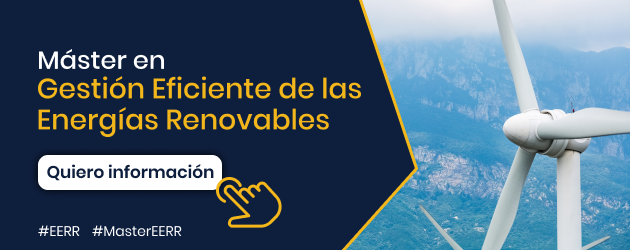We continue with the series on the changes and modifications that affect “Royal Decree 732/2019, of December 20, which modifies the Technical building Code, approved by Royal Decree 314/2006, of March 17.”
With this entry we conclude the part corresponding to the main indicators in the justification of HE1 with the analysis of indicator n50 (ratio of air change with a pressure of 50 Pa). This indicator is focused on controlling the air permeability of the thermal envelope, both the gaps and the opaque elements.
To understand the function of this parameter we must see what the CTE 2019, “The construction solutions and execution conditions of the elements of the thermal envelope will ensure adequate air tightness. Particularly, the encounters between openings and opaques, passage points through the thermal envelope and doors leading to unconditioned spaces will be taken care of.”
Before moving on to the main n50 indicator, let's go over another compliance parameter, which is directly related; The air permeability of the voids (Q100).
Air permeability (Q100) of the gaps
All voids belonging to the thermal envelope of new buildings and the voids that are replaced, incorporated or modified in the case of existing buildings, must comply with the limit permeability values described in Table 3.1.3.a-HE1:
The indicated permeability is measured with an overpressure of 100Pa, Q100.
The established permeability values correspond to those defined by class 2 and class 3 of UNE-EN 12207:2017.
The permeability of the opening will be obtained taking into account, where applicable, the blind box.
The class of air permeability of the gapss, according to the UNE EN 12207:2000 standard is:
- Class 1: Cw;100 ≤ 50m3/hm2
- Class 2: Cw;100 ≤ 27 m³/hm²
- Class 3: Cw;100 ≤ 9 m³/hm²
- Class 4: Cw;100 ≤ 3 m³/hm²
For those accustomed to the justification of CTE 2013 This parameter will not be new to them, although the justification may be surprising since the limit values have become more demanding. Basically, the carpentry requirements have changed from Class 1 and Class 2 in the CTE 2013 to Class 2 and Class 3 in the CTE 2019.
To see which openings belong to the thermal envelope, it is advisable to review the 2019 Technical Building Code: Annex C Considerations for the definition of the thermal envelope).
Air change ratio with a differential pressure of 50 Pa (n50)
This consideration only affects residential buildings with a total useful area greater than 120m². The limit values are marked in table 3.1.3.b-HE1, depending on the compactness of the building.
Compactness (V/A): Relationship between the volume enclosed by the thermal envelope (V) of the building (or part of the building) and the sum of the heat exchange surfaces with the outside air or the ground of said thermal envelope (A = ΣAi). It is expressed in m³/m².
Therefore, for the calculation of compactness, the calculation of the area of the enclosures and interior partitions in contact with other buildings or with adjacent spaces outside the thermal envelope is excluded.
But... How is the value of the air change ratio obtained with a differential pressure of 50Pa?
To calculate this parameter we must go to Annex H of the CTE 2019, In this Annex establishes the methodology for determining the air permeability of the building. Basically you can obtain the value of n50 in two different ways:
- Through blower door tests according to method 2 of the UNE-EN ISO 9972:2019 standard.
- In a simplified manner through the formula established in point 2 of Annex H of the DB-HE.
Determination by test
It is possible to justify the value of n50 through a test that determines air tightness in buildings, using the pressurization method by means of a fan (according to method B of the UNE-EN 13829:2002 standard).
In many cases we can obtain more favorable results than using reference values.
Determination using reference values
This Annex gives the possibility of calculating the value of the air change ratio at 50 Pa (n50), theoretically, from the following expression:

where:
V
c0
ch
TO0
TOh
It is the internal volume of the thermal envelope, in [m3]. This volume of “interior air” that includes the “useful” volume is obtained by deducting the slabs and roof thickness from the total.
It is the air flow coefficient of the opaque part of the thermal envelope, expressed at 100 Pa, in [m3/hm2], obtained from table a-Annex H;C0 existing = 29 m3/h·m2 (100Pa)C0 new = 16 m3/h·m2 (100 Pa).
It is the permeability of the voids of the thermal envelope, expressed at 100Pa, in [m3/hm2], according to its test value;
It is the surface of the opaque part of the thermal envelope, in [m2];
It is the surface of the voids in the thermal envelope, in [m²].
It is important to note that for the calculation of permeability, only opaque surfaces that are in contact with the outside air are taken into account (that is, elements in contact with the ground and adjacent spaces are excluded).
As this check is only necessary in newly built residential buildings, in practice the value of C is always used0 = 16m3/h·m2 (100 Pa).
The coefficient of 0.629 in the formula incorporates an assessment of the influence of the building's intake openings.
It is common to have problems justifying this parameter using these reference values. One of the parameters that has the most influence on the result is the value of the air flow coefficient through the opaque part (C0), the proposed calculation methodology sets the value of this parameter at 16 m3/h·m2, which could be a critical parameter depending on the compactness of the building and the percentage of glazing.
The value that we can adjust is the permeability of the holes. If we have difficulties justifying the value of n50, we can choose to use joinery with improved permeability in our project. Class 3 and Class 4 carpentry, improve the permeability value of the voids (Ch) and can help us lower the global value of n50. In these cases, a larger surface area of holes can help us with compliance.
In general, the more compact the building, the easier it will be to justify this parameter. The formula puts in ratio of the surface of the envelope in contact with the outside air with the volume that we have called “interior air” of the building, therefore reducing the surface and increasing the volume favors compliance.
Building typologies
To illustrate this behavior of the value of n50 and its justification in different types of buildings We are going to perform the following experiment:
The starting point is a building with a 20% glass surface, with a value of Ch=27 m3/h·m2 (100 Pa). Varying the compactness of the building between 1-4 we have the following results:
He limit mark the values from table 3.1.3.b-HE1, depending on the compactness of the building, and the value of n50 shows the permeability value of the building. Until compactness close to 2, it is not possible to justify this section according to the reference formulas.
If we reduce the value of Ch=9 m3/h·m2 (100 Pa) the results are improved, making it possible to justify buildings with a compactness close to 1.5
In buildings with a percentage of gaps higher than 40% with a value of Ch=9 m3/h·m2 (100 Pa) a slight improvement is seen in the results, although we will have the added difficulty of justifying the k indicator.
As can be seen from the results of the graphs, in many buildings it will be difficult to justify the value of n50 through reference values and it will be necessary to carry out a blower door study to check the air tightness of the building.
We should not understand the result of the calculation of n50 by means of the reference values as an estimate, prediction or calculation of the test value for the tightness of the building. With this value we try check, roughly, the risk of air permeability be very high and have a very high impact on the energy efficiency of the building.
The limitation in HE 1 is established in terms of control parameters but, when more reliable values are available (such as test values), these values are preferable and are reflected in the energy performance of the building.



































